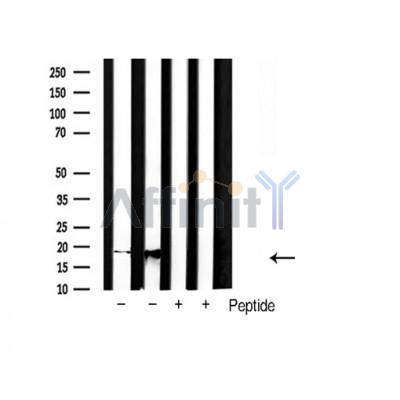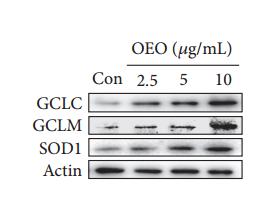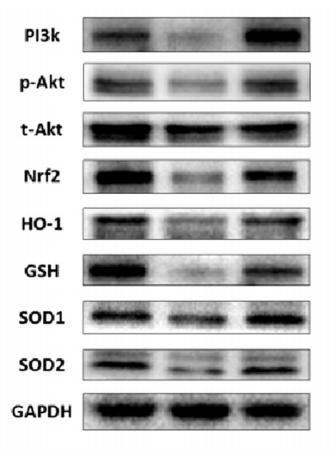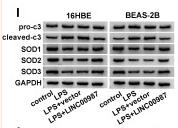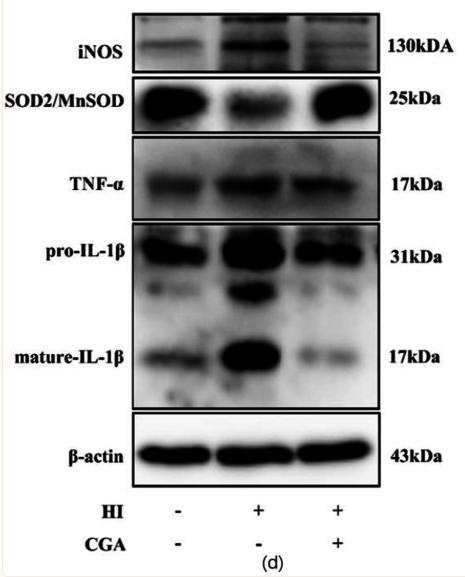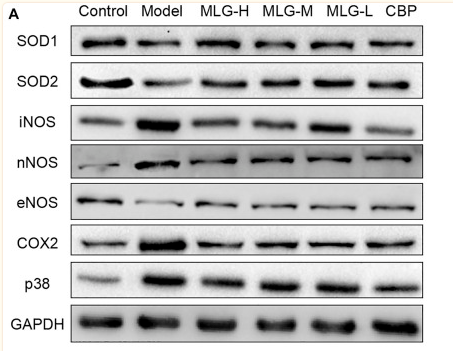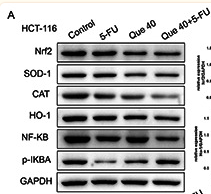SOD1 Antibody - #AF5198
| Product: | SOD1 Antibody |
| Catalog: | AF5198 |
| Description: | Rabbit polyclonal antibody to SOD1 |
| Application: | WB IHC |
| Cited expt.: | WB, IHC |
| Reactivity: | Human, Mouse, Rat, Pig |
| Prediction: | Pig, Bovine, Horse, Sheep, Rabbit, Dog, Chicken |
| Mol.Wt.: | 20kD; 16kD(Calculated). |
| Uniprot: | P00441 |
| RRID: | AB_2837684 |
Related Downloads
Protocols
Product Info
*The optimal dilutions should be determined by the end user. For optimal experimental results, antibody reuse is not recommended.
*Tips:
WB: For western blot detection of denatured protein samples. IHC: For immunohistochemical detection of paraffin sections (IHC-p) or frozen sections (IHC-f) of tissue samples. IF/ICC: For immunofluorescence detection of cell samples. ELISA(peptide): For ELISA detection of antigenic peptide.
Cite Format: Affinity Biosciences Cat# AF5198, RRID:AB_2837684.
Fold/Unfold
ALS; ALS1; Amyotrophic lateral sclerosis 1 adult; Cu/Zn SOD; Cu/Zn superoxide dismutase; Epididymis secretory protein Li 44; HEL S 44; Homodimer; hSod1; Indophenoloxidase A; IPOA; Mn superoxide dismutase; SOD; SOD soluble; SOD1; SOD2; SODC; SODC_HUMAN; Superoxide dismutase [Cu-Zn]; Superoxide dismutase 1; Superoxide dismutase 1 soluble; Superoxide dismutase Cu Zn; Superoxide dismutase cystolic;
Immunogens
A synthesized peptide derived from human SOD1, corresponding to a region within the internal amino acids.
- P00441 SODC_HUMAN:
- Protein BLAST With
- NCBI/
- ExPASy/
- Uniprot
MATKAVCVLKGDGPVQGIINFEQKESNGPVKVWGSIKGLTEGLHGFHVHEFGDNTAGCTSAGPHFNPLSRKHGGPKDEERHVGDLGNVTADKDGVADVSIEDSVISLSGDHCIIGRTLVVHEKADDLGKGGNEESTKTGNAGSRLACGVIGIAQ
Predictions
Score>80(red) has high confidence and is suggested to be used for WB detection. *The prediction model is mainly based on the alignment of immunogen sequences, the results are for reference only, not as the basis of quality assurance.
High(score>80) Medium(80>score>50) Low(score<50) No confidence
Research Backgrounds
Destroys radicals which are normally produced within the cells and which are toxic to biological systems.
Unlike wild-type protein, the pathogenic variants ALS1 Arg-38, Arg-47, Arg-86 and Ala-94 are polyubiquitinated by RNF19A leading to their proteasomal degradation. The pathogenic variants ALS1 Arg-86 and Ala-94 are ubiquitinated by MARCH5 leading to their proteasomal degradation.
The ditryptophan cross-link at Trp-33 is responsible for the non-disulfide-linked homodimerization. Such modification might only occur in extreme conditions and additional experimental evidence is required.
Palmitoylation helps nuclear targeting and decreases catalytic activity.
Succinylation, adjacent to copper catalytic site, probably inhibits activity. Desuccinylation by SIRT5 enhances activity.
Cytoplasm. Mitochondrion. Nucleus.
Note: Predominantly cytoplasmic; the pathogenic variants ALS1 Arg-86 and Ala-94 gradually aggregates and accumulates in mitochondria.
Belongs to the Cu-Zn superoxide dismutase family.
Research Fields
· Cellular Processes > Transport and catabolism > Peroxisome. (View pathway)
· Human Diseases > Neurodegenerative diseases > Amyotrophic lateral sclerosis (ALS).
· Human Diseases > Neurodegenerative diseases > Huntington's disease.
· Human Diseases > Neurodegenerative diseases > Prion diseases.
· Organismal Systems > Aging > Longevity regulating pathway - multiple species. (View pathway)
References
Application: WB Species: Rat Sample: brain tissue
Application: WB Species: Mouse Sample: gastric tissues
Restrictive clause
Affinity Biosciences tests all products strictly. Citations are provided as a resource for additional applications that have not been validated by Affinity Biosciences. Please choose the appropriate format for each application and consult Materials and Methods sections for additional details about the use of any product in these publications.
For Research Use Only.
Not for use in diagnostic or therapeutic procedures. Not for resale. Not for distribution without written consent. Affinity Biosciences will not be held responsible for patent infringement or other violations that may occur with the use of our products. Affinity Biosciences, Affinity Biosciences Logo and all other trademarks are the property of Affinity Biosciences LTD.
